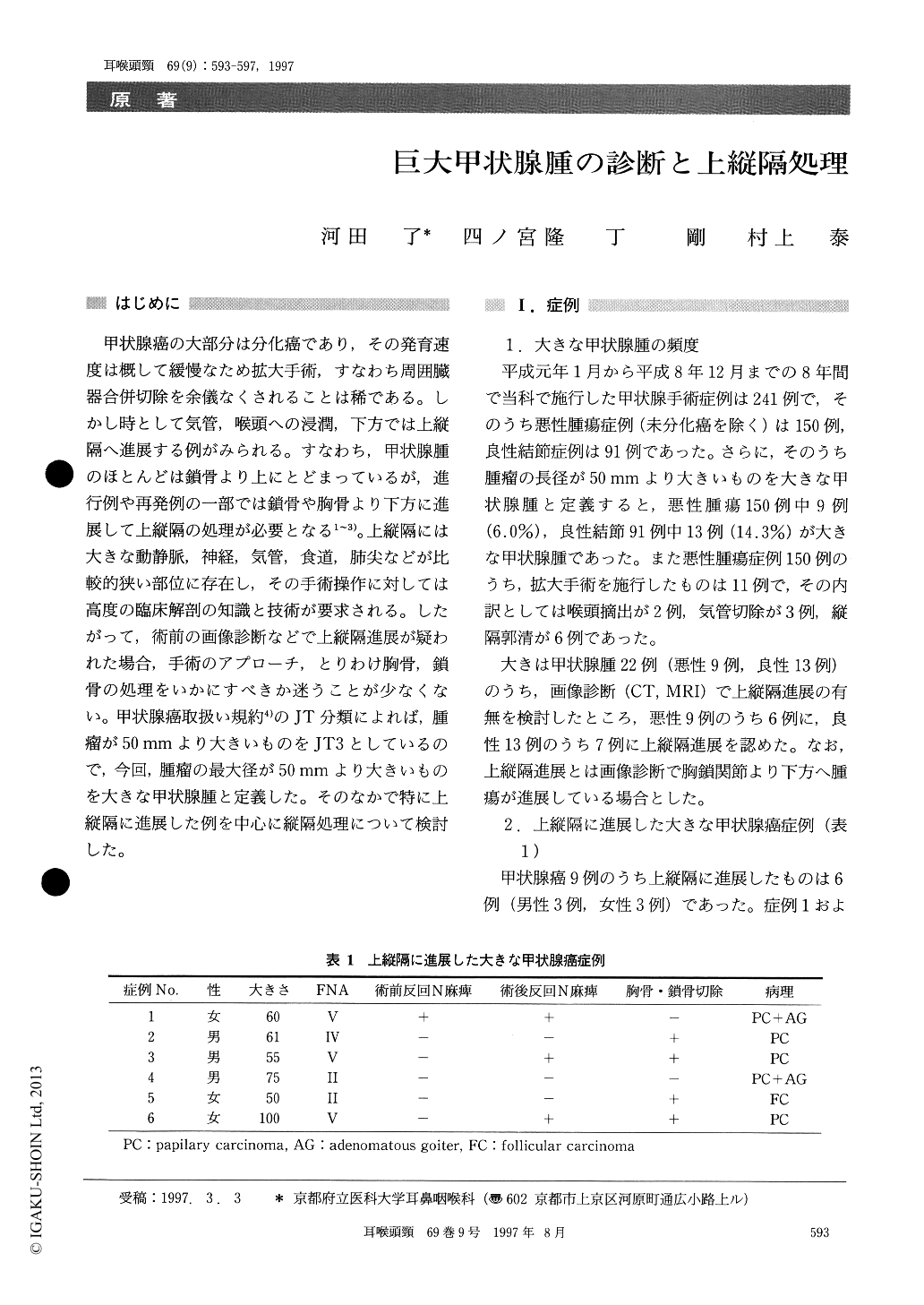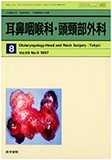Japanese
English
- 有料閲覧
- Abstract 文献概要
- 1ページ目 Look Inside
はじめに
甲状腺癌の大部分は分化癌であり,その発育速度は概して緩慢なため拡大手術,すなわち周囲臓器合併切除を余儀なくされることは稀である。しかし時として気管,喉頭への浸潤,下方では上縦隔へ進展する例がみられる。すなわち,甲状腺腫のほとんどは鎖骨より上にとどまっているが,進行例や再発例の一部では鎖骨や胸骨より下方に進展して上縦隔の処理が必要となる1〜3)。上縦隔には大きな動静脈,神経,気管,食道,肺尖などが比較的狭い部位に存在し,その手術操作に対しては高度の臨床解剖の知識と技術が要求される。したがって,術前の画像診断などで上縦隔進展が疑われた場合,手術のアプローチ,とりわけ胸骨,鎖骨の処理をいかにすべきか迷うことが少なくない。甲状腺癌取扱い規約4)のJT分類によれば,腫瘤が50mmより大きいものをJT3としているので,今回,腫瘤の最大径が50mmより大きいものを大きな甲状腺腫と定義した。そのなかで特に上縦隔に進展した例を中心に縦隔処理について検討した。
241 cases of thyroid tumor were operated on at our department from 1989 to 1996;150 cases of malignant tumors and 91 benign tumors. The large thyroid tumors with the maximum diameter over 50 mm accounted 22 of the 241 cases. The large malig-nant thyroid tumors were 9 cases, and 6 cases of the tumors were extending to the superior mediastinum. The partial sterno-cleidectomy was performed in 4 cases in malignant tumors extending to the superior mediastinum, while thyroidectomy was performed without the partial sterno-cleidectomy in all cases for the large benign tumors extended to the medias-tinum. It was important to diagnose benign and malignant tumor prior to operation.

Copyright © 1997, Igaku-Shoin Ltd. All rights reserved.


